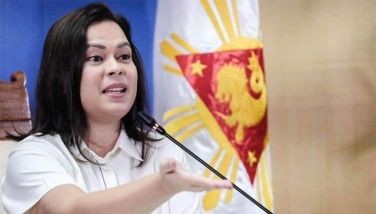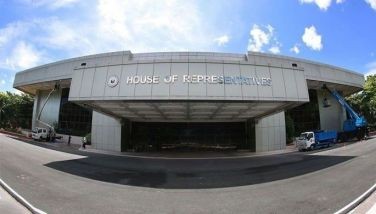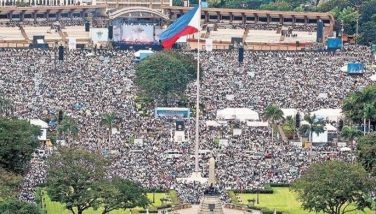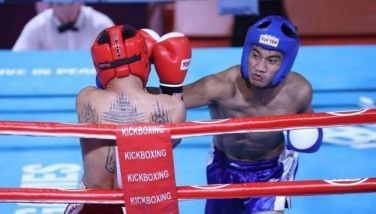Highs and lows

As with individuals, countries also have their highs and lows. Cory’s funeral was a high — the excitement, the emotions aroused, noble declarations of unity and symbols to heighten our common weal as the Filipino nation. We should take such highs in stride so that when the lows come, we will not be overwhelmed. We will know what to do. The Greeks made a virtue of moderation and the classic golden mean as a standard of life is as true today as it was in the distant past of early civilization.
One way to pull back from the highs is to be aware that these are not permanent. Life is never just high, low can very well be just around the corner. Highs should not blind us about the temporal nature of everything. Similar events happen in other countries.
For example I am intrigued by the similarity of our people power events with other countries like Poland happening so closely with the Philippines. Today it is happening also in the NIS (Newly Independent States) of the former Soviet Union. People power revolutions in the NIS have been called color revolutions. There was Georgia’s Rose Revolution and then Ukraine’s Orange Revolution. The Philippines yellow revolution came first. We saw its reappearance with a sudden flurry of the color in Cory Aquino’s funeral - balloons, umbrellas, t-shirts, buntings, flowers. Why? For the moment, I don’t want to get into the politics of color revolutions and how it is claimed by Western critics as a US strategy to make countries toe Washington’s political line. But there is clearly something going on that Filipinos are generally not aware of.
Sometime ago when I visited Warsaw and having read only Western media dispatches, I enthusiastically told my hosts if it was possible for me to interview Lech Walesa, the leader of Solidarity that brought down the communist regime in his country. You should have seen their faces. They must have thought I came from Timbuktu. Walesa was no longer important to the Poles. He may have been a brilliant organizer and mobilizer of crowds but he could not run a government. Didn’t I know that his closest adviser was his former chauffeur, with whom he played table tennis? I didn’t.
* * *
In Iran, they are asking the same question about a green revolution. Paul Craig Roberts asks if the election protests are not from the same genre of color revolutions. He says that if Ahmadinejad stole the election, because the outcome was declared too soon after the polls closed for all the votes to have been counted, why didn’t Western media report Mousavi declared his victory several hours before the polls closed. He argues this is “classic CIA destabilization designed to discredit a contrary outcome.” According to Roberts, “it forces an early declaration of the vote because the longer the time interval between the preemptive declaration of victory and the announcement of the vote tally, the longer Mousavi has to create the impression that the authorities are using the time to fix the vote.” Sounds familiar.
It is amazing that people don’t see through this trick. He cites a London Telegraph report which said that former President Bush signed “an official document endorsing CIA plans for a propaganda and disinformation campaign intended to destabilize, and eventually topple, the theocratic rule of the mullahs.” London Telegraph is a conservative newspaper so its detached reporting on the issue can be believed.
That is also the answer to questions why destabilization is suspected in countries like the Philippines even with the election of President Obama. The order may have been made in 2007 and it could be that it is only now that it is being implemented.
Seymour Hersh, reported in respected New Yorker June 29, 2008: “Late last year, Congress agreed to a request from President Bush to fund a major escalation of covert operations against Iran, according to current and former military, intelligence, and congressional sources. These operations, for which the President sought up to $400 million, were described in a Presidential Finding signed by Bush, and are designed to destabilize the country’s religious leadership.”
Hersh recognizes there were sincere participants in the Tehran protests but we need to know the whole picture. For him the protests had “the hallmarks of the CIA orchestrated protests in Georgia and Ukraine.”
You’ll have to be blind not to see this he says.
Kenneth Timmerman who is a known neocon admits “the National Endowment for Democracy has spent millions of dollars promoting ‘color’ revolutions . . . Some of that money appears to have made it into the hands of pro-Mousavi groups, who have ties to non-governmental organizations outside Iran that the National Endowment for Democracy funds.” Timmerman’s own neocon Foundation for Democracy is “a private, non-profit organization established in 1995 with grants from the National Endowment for Democracy (NED), to promote democracy and internationally-recognized standards of human rights in Iran.”
* * *
Back in the Philippines, where there is a scarcity of news and commentaries that are more objective about the Arroyo government, it was good to read Roel Landingin’s article for the Financial Times. He concludes “the Philippines today is stronger, but challenges remain.” He concurs with President Gloria Macapagal Arroyo, who said in her state-of-the-nation address that “the Philippines stands among the few countries likely to escape an economic contraction amid the global shocks that the best in the west failed to anticipate”. At the same time he notes that this economic resilience masks “other huge challenges since the restoration of democracy under Aquino: rapid population growth, two long-running insurgencies, long revenue shortfalls and a poor investment climate.”
“While the new Constitution instituted by Aquino enshrined civil liberties and democracy, it has also made decisive action difficult for policymakers. He quotes another writer: “We were afraid of a strong state because it abused our liberties but on the other hand we wanted the state to do many things,” said Raul Pangalangan, former law dean of the University of the Philippines. “The Constitution is one part of a list of everything we want the government to do — redistribute wealth, improve healthcare delivery, etc. And the next part is a list of what the government cannot do to achieve that.”
He writes about a widespread recognition of the weaknesses of the current Constitution but admits Filipinos were divided about the timing.
Division and differences are part of the democratic way of life and constitutional reforms are one of the most difficult issues to achieve unanimity because of the inevitable conflict of interests. I wish he had written also about that. If we were to be true to our commitment to democracy, the only way to resolve difference and division on such an important issue as constitutional change is to put it to a vote. That is democracy.
- Latest
- Trending




























